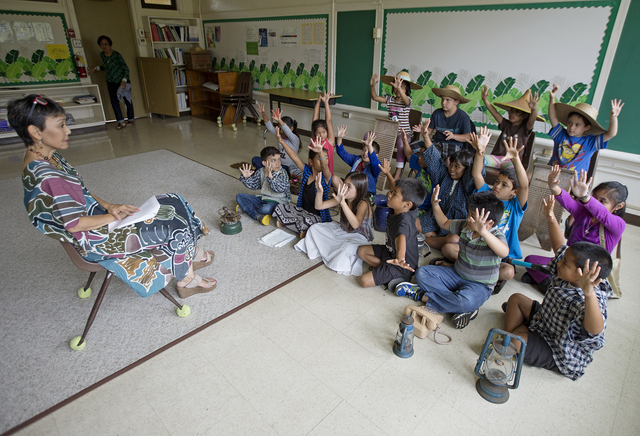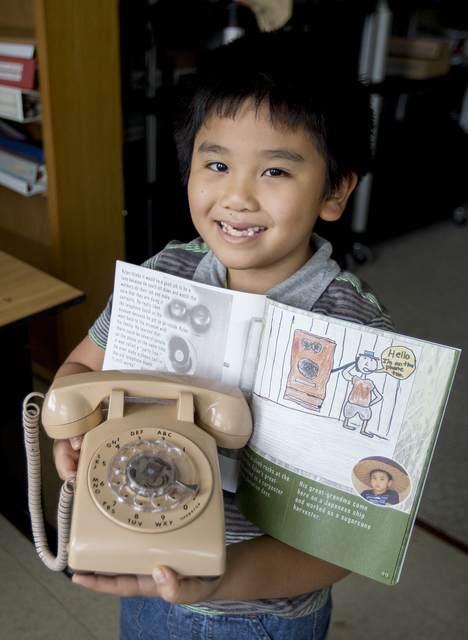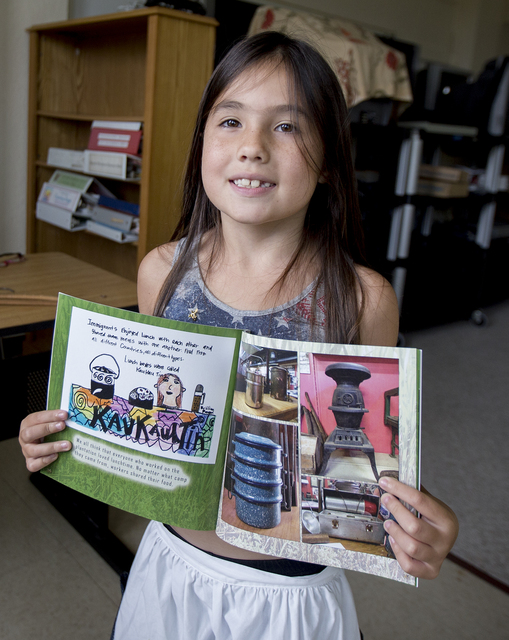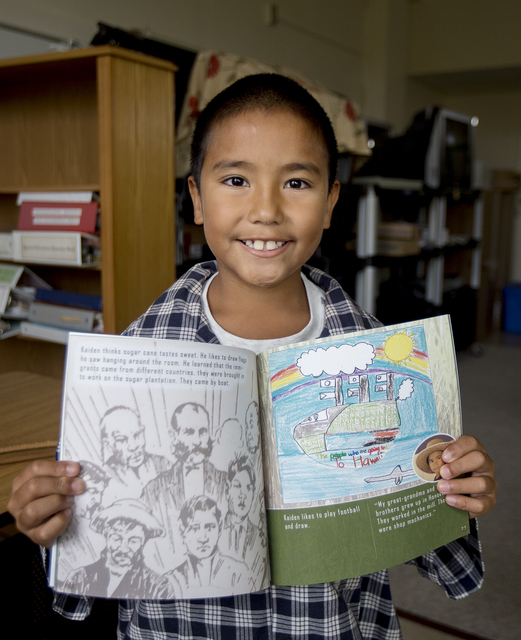Look, Mom, I wrote a book!
CORRECTION: A previous version of this story gave incorrect times for an upcoming event at the Hawaii Plantation Museum. Cynthia Inouye’s second-grade class from Kalanianaole Elementary School will be there from 10 a.m.-noon on Saturday, May 16, to sign copies of their new book, “A Day at the Hawaii Plantation Museum.” During that time, admission will be free to the public. For more information on the museum, visit http://memoriesofhawaiibigisland.com/.
ADVERTISING
—-
Publishing. It’s a dog-eat-dog business, fraught with tight margins and stiff competition.
But when it comes to hard work, the industry doesn’t hold a candle to sugar cane.
Just ask the members of Cynthia Inouye’s second-grade class at Kalanianaole Elementary and Intermediate School — published authors all, before the age of 9.
“The ladies had to carry those big buckets, filled with manapua,” Jayla Fiesta said Tuesday, as she and her classmates described what they learned at a recent trip to the Hawaii Plantation Museum in Papaikou.
“And they had to use the washboard … to clean the clothes for the single men who were working in the fields,” Jayla added.
The class researched Hawaii Island’s history of sugar cane plantations this year and then published their own book on the topic in partnership with Hilo-based publisher Larry Czerwonka.
“With my publishing company, I’ve always been thinking about what are good ways to get kids to read more,” he said. “I’ve been in the business since 1986, and I’ve never met a successful person that didn’t read.”
About seven months ago, Czerwonka met with teachers and principals at the Papaikou school and pitched the idea of publishing a book with a class, and Inouye jumped at the chance. They toyed with the idea of making a coloring book before latching onto the plantation concept.
On Tuesday, as the class discussed its experience researching the book, Kaizehya Mateo sat in front of a large cane knife on the classroom floor. He talked about the work done in the fields, as well as one of its sweet rewards.
“I liked chewing the sugar cane,” he said of his experience at the museum.
Noah Bishop said he was most impressed by the enormous trucks that were used to haul the cane. His great-grandfather operated a crane and drove the Peterbilt trucks when he worked on a plantation.
“My grandpa must’ve been very brave and strong. That is a big truck!” Noah said.
In addition to visiting the Papaikou museum, the class benefited from meeting with area kupuna, who graciously came to Kalanianaole to talk with the second-graders about their experiences on the plantations, Inouye said.
“It was so great that the elders came in,” she said. “To see artifacts is one thing, but to hear about them from the people who used them is great.”
Kaizehya’s grandfather once worked on a plantation, and told his grandson about how he and other keiki used to make their own toys. Together, the pair made their own bamboo kite, which Kaizehya brought to share with the class.
Inouye said her young charges were fascinated by some of the old technology that can’t be found in most homes today, such as rotary phones and pot-bellied stoves. They also learned about the various cultures and traditions that came together on the plantations, including Portuguese, Japanese, Hawaiian, Chinese, Filipino and more.
“We saw the flags of all the people from the plantations,” she said.
After all their research was finished, the class set to work writing up interviews and articles about the various subjects, as well as creating artwork to go into their book. Once that was complete, Czerwonka took over, laying out the pages and publishing the glossy softcover book.
Czerwonka said that ever since he was 14 years old he’s had a very clear idea about wanting to help people who wouldn’t ordinarily have the chance to publish their own work. In addition to working with the Kalanianaole students, he’s helped publish a number of books for area homeless people.
When asked whether he worried that publishing books for schoolchildren might not be a big money-maker, Czerwonka scoffed.
“Look, every publisher deals with the fact that out of every 10 books they publish, only two will make any money. It’s a choice. To find something and say, ‘Well, what should we do with this?’ … I have a goal by 2020 to publish 10,000 people in Hawaii, so they know what it’s like to be a published author.”
All told, the first shipment of 50 copies, with a cover price of $14 each, cost about $2,500 to produce, he said. And as luck would have it, “A Day at the Hawaii Plantation Museum” sold out in about four hours, necessitating another order of 100.
Inouye said the proceeds from the book’s sales will all go to the plantation museum.
When the books first arrived, the class was thrilled, Inouye said. And in a very telling aside, when one considers this younger generation’s familiarity with the Internet, she added that the kids were most impressed by the fact the book is available for sale on Amazon.com.
“It’s the real deal!” Inouye said with a laugh.
Email Colin M. Stewart at cstewart@hawaiitribune-herald.com.






